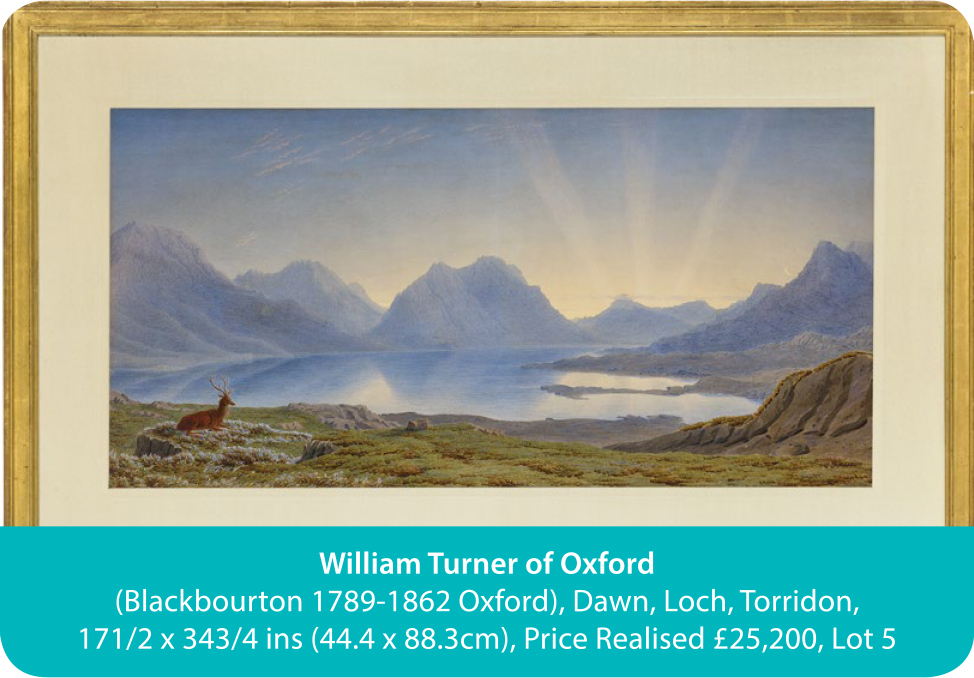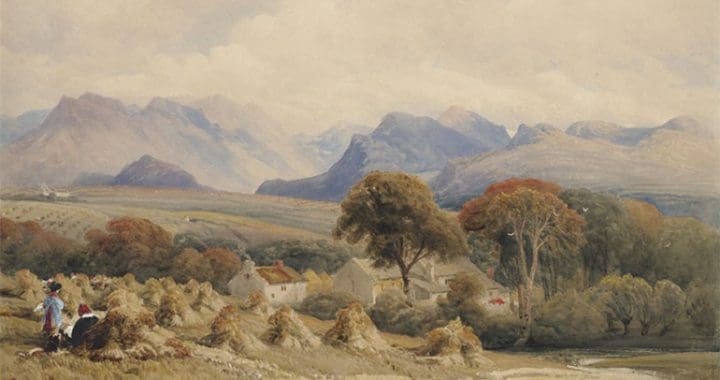For the second time in two years, a good friend of mine has offered a portion of his stock for sale at one of the major London Auction Houses.
Last time around it was Rafael Valls at Sotheby’s, consigning Old Master oil paintings. I need not have fretted, all but 2 sold, but this time, it was Martyn Gregory offering British watercolours at Christie’s, a far more challenging proposition.
There are several reasons why watercolours do not chime with modern taste. The first is their fragility. We now know that light comes in particles and waves. We have always known that it generates heat and it fades watercolour pigments, if it hits them directly. This can take just a matter of a few years. They are also susceptible to attack from silverfish, if they are coated in Gum Arabic, the substance which made Osama Bin Laden’s family fortune, you may remember, and which was much used in the 19th Century by watercolourists to give depth to the colours. Silverfish love to eat Gum Arabic and when they do, it takes the pigment with it, leaving blank squiggles across the paper!
Watercolours are often painted on acidic paper and this can discolour and damage the pigments too. Furthermore, the big exhibition ‘machines’, the enormous watercolours ‘finished’ to a high degree, which the O.W.S. (Old Watercolour Society) and others produced in the early 19th Century, with a view to them holding their own, visually, when hung in exhibitions next to oil paintings, are totally out of fashion.
This is the background against which Martyn Gregory’s British Landscapes were offered. Christie’s were confident the sale would succeed and to sell 149 out of 194 lots proves them to be right. However, a closer analysis of what happened is revealing. The sale total was £559,864 including buyers’ premium, which adds nearly 34% to the hammer price. The lots averaged out at just over £3,700 each. When I was at Bonhams 10 years ago, we calculated that any lot selling for under £10,000 lost us money. (In this sale only 14 lots hit this threshold and that is including premiums) It must be the same for Christie’s. We can only speculate that they hope to get the rest of his stock in due course!
The landscapes that appealed most were wild places with dramatic stormy skies or lowering cloudy sunsets or both. The first 5 to exceed £10,000 were all Scottish scenes. Lot 5, the Turner of Oxford of Loch Torridon under a moody dawn sky was a very impressive example of this genre, as was his Sunset over Loch Coruisk on the Isle of Skye.

There was a classic harvesting scene by de Wint, painted on a warm late summer day at £15,000 and a fascinating and rare whaling scene in the Arctic by John Cleveley which made £20,000. However, despite these watercolours being well-chosen examples, in good condition, selected by an expert with a very good eye and promoted by the Christie’s International publicity machine, one came away with the feeling that British Watercolours, which were so sought after by collectors in previous decades, are somewhat passé.
In real terms most are worth a tenth of what they were 50 years ago. When will it be time for their re-assessment?

David Dallas joined Christie’s in 1969, where he was the youngest person in a Technical Department (Old Masters). He subsequently became deputy head of the Picture Department at Phillips Son and Neale and ended his auctioneering career as International Director (Global Head) of Old Masters at Bonham’s in January 2015.







